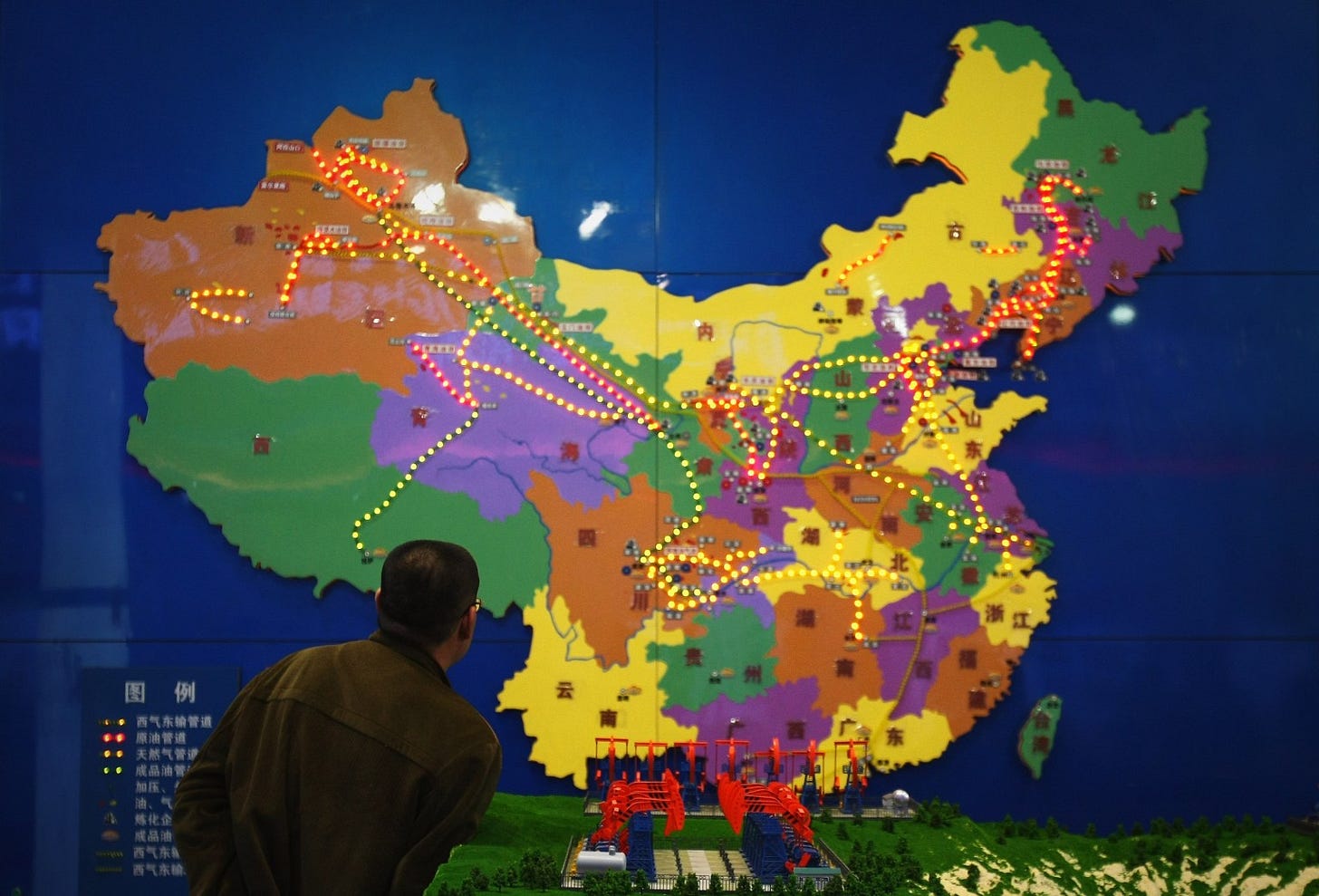End of financial year fundraising
The indomitable Peter Browne continues to run the great internet journal Inside Story on the smell of an oily rag, and is fundraising. So I said I’d try to encourage some money to flow his way from this newsletter. I’ll match every dollar you donate to the cause which is over $100. So if you donate $200, I’ll throw in an extra $100. Why the fancy formula. Well I’m an economist — and this is behavioural economics.
Frankly, against this kind of marketing psyops, you don’t stand a chance. So just head to the page for donations — which is here — donate an amount over $100 and then email me telling me how much you donate. On Peter’s confirmation, the ethics process will begin. A counsellor will be sent out to your place, and provided you get over the trauma and also if you confirm you have read our 14 page privacy policy, I’ll cough up the matching funds (up to a total of $2,000).
Here’s another behavioural economics tip. Do it — do it NOW!
I have seen the off-ramp and it works
Extraordinary images are being detected within the early pictures taken by the James Webb Space Telescope. As you know, the JWST went in search of exoplanets. Anyway at about the same time I was seeking an AI artist to illustrate the phenomenon of corporate anti-thinking. You know the kind of thing where grown people, some of them quite intelligent sit around and agree on their ‘mission’ and ‘vision’ — each of which can be agreed in an hour’s discussion and expressed in a single short sentence. They then agree on their five favourite values.
Anyway, on applying advanced upscaling technologies NASA scientists are decrypting within JWST images off-ramps from reality on our galaxy’s exoplanets.
Even more exciting, when the castle is upscaled it turns out it’s really a jumping castle.
It’s believed that executives are floating weightless inside the castle, but NASA scientists were reluctant to preempt the results of a probe which is believed to be imminent.
The $100 Billion lying on the pavement
Another great conversation with my friend, colleague and partner in podcasting crime Gene Tunny. Gene suggested we discuss various ways in which we've placed nationally independent analysis at the centre of government, only to find that it hasn't performed as well as it might. A classic example is regulatory impact statements, which were a good idea back when Australia was among the world's leaders in introducing them in 1986.
However, they've not had much impact because although notionally independent, government rewards 'can do' types both at the political and bureaucratic level. So the process degrades into a box-ticking process. Something similar happens with freedom of information as bureaucrats delay and resist release in various ways and the important stuff migrates into whispered conversations in corridors and secure and self-erasing platforms like Signal. And then there's independent assessment of infrastructure.
The new ALP Government has cleaned things up a little, but could go a lot further as independent Allegra Spender suggested in this intervention. But the two major parties wouldn't have it. Ultimately this takes us to the question of how firmly democratic principles are anchored in Western Democracies. They're under threat everywhere. Yet there's a simple, radical and democratic way to secure them. Build the institutions in which the people can defend them!
If, like me, you prefer audio only, you can find it here.
Another take on the off-ramp
Great video on the housing crisis
What if We’re Thinking About Inflation All Wrong
The fall and rise of Isabella Weber
Anyone who suggests fighting inflation with price controls is crazy right? Well a lot of price controls end in tears. My father was fond of a saying he picked up with his University of Chicago training, “There’s only one way to destroy a city more certain than bombing. Rent control.”
Then again, things are tricky. Prices have surged not because domestic costs have risen but because of COVID and Ukraine war induced scarcities and bottlenecks. Both raise prices but neither is ‘inflationary’ unless they create some self-perpeuating cycle in which incomes (particularly wages) chase prices. So other things being equal, inflation should return to target soon enough so long as wages don’t start chasing them. But there are complications. The labour market is tight. Even so, wages have been slow to get going. So there’s at least an in principle case for temporary price controls to help in creating a circuit breaker. Just like we do in war. Oh yes, that’s right there IS a war on!
From Zachary Carter in the New Yorker.
To Weber, people like [Larry] Summers were looking at the situation from the wrong side. The focus ought to be on sellers, not buyers. The pandemic had upended global supply chains, making it harder for corporations to acquire the stuff they needed to make their products. This should have squeezed their profit margins. Instead, as the economy began opening up, corporate profits were wildly outpacing growth in consumer spending power.
Here’s an example. Semiconductor chips are the basic building blocks for electronic equipment. When COVID lockdowns and a string of temporary factory closures led to global shortages, the price of each chip began to rise, as did the price of everything else that used them. This proved especially troubling for the automobile market—a new vehicle can require as many as three thousand chips. As you’d expect, new cars got more expensive. So did the consumer alternative, used cars, which, in the first six months of 2021, jumped in price by nearly thirty per cent. But Weber argued that carmakers were raising prices far beyond what was necessary to cover the more costly chips. By 2022, the ongoing chip shortage had resulted in the fewest annual sales of new cars in more than a decade. Still, profits were up—car companies posted their best earnings in six years. … Crucially, firms weren’t worried about losing customers to competitors; because of the supply bottlenecks, competitors would also be raising prices.
The onset of war in Europe marked the beginning of a new phase for the global economy. Weber had been arguing for months that the supply shocks of the pandemic were akin to those typically seen in war. Now an actual war had arrived, and the resulting economic dislocation was difficult to interpret as a case of flush consumers spending the economy into oblivion. It was hard to see how the orthodox approach—increasing unemployment through higher interest rates—would help solve the problem. In mid-September, Weber received an urgent note from the German Ministry of Economic Affairs. Would she be interested in serving on an official government commission to contain gas and heating prices? She took the job, and, within a few weeks, the commission had settled on her price-control plan as the solution. “In a strange way, the initial backlash to our proposals had been so tremendous that everyone knew we had come up with the idea, which meant that we didn’t lose credit for it,” she told me.
The German “price brake” is currently scheduled to run through April, 2024. After almost four months in operation, inflation in Germany fell to 7.4 per cent, the first time that it had dipped below eight per cent in half a year. And Germany’s example seems to have encouraged broader initiatives. In February, the European Union began implementing a separate price cap on natural gas that applies to the entire Eurozone. Weber’s fundamental point that corporate profits are a key driver of today’s inflation is now openly embraced by the establishment on multiple continents. Researchers at the Kansas City Federal Reserve recently concluded that corporate price markups may have accounted for more than half of the inflation experienced by the U.S. in 2021. Weber’s ideas have shifted from “truly stupid” to sound economic practice, supported by an ideologically broad coalition.
The strongly left or right are disproportionately white
HT: Antonios Sarhanis. Source is here, p. 141.
Wokifying ancient Egypt
And leaving modern Egyptians unimpressed
From a reader. An exhibition’s grooviness runs into some blowback.
A team of archaeologists from a Dutch museum has been banned from carrying out excavations in Egypt’s rich Saqqara necropolis. … After the opening of “Kemet: Egypt in Hip Hop, Jazz, Soul & Funk,” the National Museum of Antiquities (RMO) in Leiden received an email from the head of foreign missions of the Egyptian Antiquities Service saying that the museum is “falsifying history” with its “Afrocentric” approach. …
In recent days, the museum’s social media posts about the exhibition were flooded with comments, mostly by Egyptians who deemed it disrespectful. Some commented with photos showing light-skinned ancient Egyptian drawings, next to ones with darker skin tones, which they say the museum is propagating.
In response to the controversy, the museum added a note on its website with further information about the show’s content, background and goals. It also said it would remove offensive or racist comments from its social media platforms. …
This isn’t the first time Egypt has objected to the depiction of its ancient ancestors. It recently criticized the Netflix docuseries “Queen Cleopatra,” which portrays the ruler of the Ptolemaic Kingdom of Egypt as a woman of color.
Zahi Hawass, an Egyptologist and former Egyptian minister of antiquities, wrote last month that “no one with even a little education could make a film showing Cleopatra as black.”
Sharks can be cuties: Here’s proof
Keeping Australia safe from open justice
From Crikey!
Many readers would have a passing awareness of the “Alan Johns” or “Witness J” matter, in which a former intelligence officer was secretly charged, arraigned, convicted, sentenced and imprisoned in a Canberra jail in “unprecedented” Kafkaesque style in early 2019.
But few would know of this telling exchange between Greens Senator David Shoebridge and the independent national security legislation monitor, Grant Donaldson SC, two months ago.
“All of the orders that were made in the Alan Johns matter that gave rise to [its secrecy] were made by the consent of the parties,” Donaldson said, as he fronted the Senate’s Legal and Constitutional Affairs Legislation Committee.
“Could it happen [again] under the current laws without consent [orders]?” Shoebridge asked.
“Could there be a trial that occurs with suppression of everything that occurred in the trial and in a closed court?” Donaldson said. “Yes.”
In other words, more than three years on since the Johns case was — by pure chance — brought to light, the notion that criminal prosecutions involving national security, including trials, can be conducted in wholesale secrecy remains a distinct possibility in Australia.
Are you feeling lucky? Are you feeling well thought of?
Joshua Gans on Apple’s Vision Pro
Where’s the AI?
It’s everywhere. To create a display and user interface for a computer that can be worn on your face/head, Apple had to solve several unsolved problems. First, it needed to provide little to no latency in the experience so that people feel this is a natural situation rather than something that is so strange it may make them nauseous. Second, it needed to provide a means of interacting with the device without also having to hold some other device like a controller. Finally, all this had to be at a resolution and quality that made it possible to read and work. All but the last of these (I think) required major advances in AI.
The most obvious is the interaction. Apparently, you move around a screen using your eyes, so there has to be a way of predicting what your eye is really looking for. And you then interact by using simple hand gestures. Not raising your hands and swishing Minority Report style (although that sounds like it would be fun). Instead, being able to be relaxed and not have to move your hands or hold them up at all. This required them to put a camera on the bottom of the headset to look for your hands and then AI to interpret those gestures. That whole thing is a crazy advance that I don’t believe any other company has seriously attempted. And Apple opted for that rather than, say, relying on Siri; which is interesting.
Relatedly, Apple also uses AI to identify people who come into the room and work out whether you want to interact with them. This is another great use of AI.
AI also solves the latency problem. This is not Apple’s first rodeo in that regard. As we wrote about in Prediction Machines, the iPhone almost failed to be a thing because they couldn’t get the keyboard to work. Then one engineer solved it overnight by using some basic predictive analytics to solve what would otherwise have been a “fat thumb” issue.
The same type of magic as at work with the Vision Pro. A former Apple scientistdescribed this:
Generally as a whole, a lot of the work I did involved detecting the mental state of users based on data from their body and brain when they were in immersive experiences.
So, a user is in a mixed reality or virtual reality experience, and AI models are trying to predict if you are feeling curious, mind wandering, scared, paying attention, remembering a past experience, or some other cognitive state. And these may be inferred through measurements like eye tracking, electrical activity in the brain, heart beats and rhythms, muscle activity, blood density in the brain, blood pressure, skin conductance etc.
There were a lot of tricks involved to make specific predictions possible, which the handful of patents I’m named on go into detail about. One of the coolest results involved predicting a user was going to click on something before they actually did. That was a ton of work and something I’m proud of. Your pupil reacts before you click in part because you expect something will happen after you click. So you can create biofeedback with a user's brain by monitoring their eye behavior, and redesigning the UI in real time to create more of this anticipatory pupil response. It’s a crude brain computer interface via the eyes, but very cool. And I’d take that over invasive brain surgery any day.
Other tricks to infer cognitive state involved quickly flashing visuals or sounds to a user in ways they may not perceive, and then measuring their reaction to it. Another patent goes into details about using machine learning and signals from the body and brain to predict how focused, or relaxed you are, or how well you are learning. And then updating virtual environments to enhance those states. So, imagine an adaptive immersive environment that helps you learn, or work, or relax by changing what you’re seeing and hearing in the background.
All of these details are publicly available in patents, and were carefully written to not leak anything. There was a ton of other stuff I was involved with, and hopefully more of it will see the light of day eventually.
There are 5000 patents, so that may take some time. We have seen so many advances in AI this year but this one just boggles the mind. They are beating your own eye to the target!
Another extract on the Apple Vision Pro
HT: Brad Delong
Andy Matuschak: Vision Pro: ‘The hardware seems faintly unbelievable… as powerful as… mid-tier laptops (M2), plus a dizzying sensor/camera array with dedicated co-processor, plus displays with 23M 6µm pixels… and associated optics, all in roughly a mobile phone envelope…. What does Apple imagine we’ll be doing with these devices, and how will we do it?… This isn’t a virtual reality device, or an augmented reality device, or a mixed reality device. It’s a “spatial computing” device…. On its surface, the iPhone didn’t have totally new killer apps when it launched… mail client, a music player, a web browser, YouTube, etc. The multitouch paradigm… made those apps possible on the tiny display… allowed those familiar tools to be used anywhere…. Relatively quickly, the iPhone did acquire many functions which were “native” to that paradigm. A canonical example is the 2008 GPS-powered map…. If I find the Vision Pro’s launch software suite conceptually conservative, what might I like to see?… Huge, persistent infospaces…. Ubiquitous computing, spatial computational objects…. Shared spatial computing….
The Behavioral Revolution in Economics: What became of it?
This article argues that the behavioural revolution in economics stalled. It’s right of course, but nevertheless seems naïve about what it might mean for it not to stall. And that naïveté is then parlayed into the usual silence. While intimating this revolutionary state economics might have embraced, we learn nothing about what it would look like (other than its assumptions would be more ‘realistic’.)
However, as I explained here, while greater realism in one’s assumptions sounds like a holy grail, there’s another similarly holy grail that must be traded off against realism — the tractability of the resulting model. Unfortunately economics is deeply in thrall to the idea that it’s not ‘scientific’ if it’s not expressed in mathematics. That this idea is wrong has proven water off a duck’s back since WWII and there’s no sign of it changing now. So it leads a schizophrenic life in which it potters on with highly simplified mathematical models, along with endless complaints about those same models. If the complaints about the models were taken seriously economics would keep many of its simplified models, but would then develop a much larger body of work full of discursive analysis like history. This is the kind of world that the great mid century economist J. R. Hicks thought should be brought into existence. Instead we get a series of groundhog days in which various chinks in the crystalline edifice of neoclassical economics are discovered, a sub-discipline gets established around them, victory is prophesied but things stay largely the same.
Beyond the buzz, the behavioral breakthrough also promised to usher in a full-fledged epistemic revolution, fundamentally altering the sources of knowledge deemed valuable. … The integration of behavioral sciences into microeconomics, which focuses on the decisions and actions of individual actors, has led to a growing recognition that consumers’ and firms’ own heuristics and biases may cause their behavior to deviate from the economic model of rationality. …
But the impact of the behavioral revolution [beyond this] remains modest. Many scholars are still skeptical about incorporating psychological insights into economics, a field that often models itself after the natural sciences, particularly physics. …
Macroeconomists, who study the aggregate functioning of economies and explore the impact of factors such as output, inflation, exchange rates, and monetary and fiscal policy, have, in particular, largely ignored the behavioral trend. …
The validity of [their] assumptions, however, remains uncertain. During banking crises such as the Great Recession of 2008 or the ongoing crisis triggered by the recent collapse of Silicon Valley Bank, the reactions of economic actors – particularly financial institutions and investors – appear to be driven by herd mentality and what John Maynard Keynes referred to as “animal spirits.” …
The roots of economics’ resistance to the behavioral sciences run deep. Over the past few decades, the field has acknowledged exceptions to the prevailing neoclassical paradigm, such as Elinor Ostrom’s solutions to the tragedy of the commons and Akerlof, Michael Spence, and Joseph E. Stiglitz’s work on asymmetric information (all four won the Nobel Prize). At the same time, economists have refused to update the discipline’s core assumptions. …
By allowing for a limited release of pressure at the periphery of the paradigm, economists have managed to prevent significant changes that might undermine the entire system. Meanwhile, the core principles of the prevailing economic model remain largely unchanged. … By limiting their interventions to nudges, behavioral economists hoped to align themselves with the discipline. But in doing so, they delivered a ratings-conscious “made for TV” version of a revolution. As Gil Scott-Heron famously reminded us, the real thing will not be televised.
Scotland’s holiday from reality
The Economist tells a morality tale about Scotland:
SCOTLAND WAS the first part of Britain to get high on populist referendums. In 2014, two years before the Brexit vote, the Scottish independence campaign exhorted people to ignore the experts and revel in a glorious national renewal. The Scottish National Party (SNP) lost that battle but it won the peace. Since then the SNP has triumphed in election after election. It has made the intoxicating cause of independence the principal dividing-line among Scottish voters. Nicola Sturgeon, the party’s leader until her resignation in February, managed to make liberals giddy, too, by being not just populist but progressive.
The wheels have come off the camper van in spectacular fashion. Ms Sturgeon’s abrupt exit amid a police investigation into her party’s finances has shattered the SNP’s credibility. …
The SNP has been able to recreate the trappings of a Nordic-style social democracy—free university tuition, free eye tests, free prescriptions—in part because of a generous supply of cash from the British government. … This formula is going to become a squeeze in coming decades: the premium of per-person public spending in Scotland will fall from 124% of English levels in 2027 to 115% in 2057.
Improving Scotland’s economic prospects, and reversing its demographic decline, ought to be the SNP’s focus—not just for the sake of the country, but also as a route to the party’s revival. However, manufacturing outrage is electorally easier and more instantly rewarding than the long haul of fixing real problems. …
As with all populism, weaning activists and voters off a habit of constitutional confrontation will require a cultural shift. Every issue is seen through the lens of social outcomes first and implications for growth last. The SNP has grown chilly to businesses and made the fuzzy idea of a “well-being economy” the centrepiece of its agenda; its Green coalition partners repudiate the measure of GDP growth. The party has hoarded power centrally in Edinburgh, when cities such as Glasgow ought to have been able to try out their own growth-enhancing policies.
Why Putin will use nuclear weapons
Speaking of holidays from reality, I’m a worrier. And I worry about nuclear weapons. I’ve always thought they were much more important to worry about than global warming (though that’s also important). And the fact that Russia hasn’t used nuclear weapons seems to have lulled many into a state of complacency about the subject. I have no idea how expert this guy is, or how good his judgement is, but in the interests of resisting the pull of the off-ramp to reality, I recommend the piece:
Many Western experts say they take the threat of a Russian nuclear strike in Ukraine seriously, but make the mistake of asserting that the odds are low. … And yet, there is strong evidence that Putin has resolved to use a tactical nuclear weapon in his war in Ukraine. In recent speeches and interviews, he has argued that Russia faces an existential threat — a situation, under Russian policy, that warrants the use of nuclear weapons. He has also reshuffled his military leadership, so that the three generals responsible for the employment of tactical nuclear weapons now command his “special military operation” in Ukraine.
Moreover, while Nato has made it clear that it will not sanction the use of its members’ nuclear weapons to defend Ukraine, Putin already has tactical reasons to deploy them: to save Russian soldiers’ lives, to shorten the war, to destroy Ukrainian forces. He also has strategic reasons: to rejuvenate the deterrent value of his nuclear arsenal and to prove that he is not a bluffer. … Today, a single nuclear strike in Ukraine could thwart a Ukrainian counterattack with little loss of Russian lives.
[I]n March, Putin announced that he would station tactical nuclear weapons in Belarus, with a storage facility set to be built as early as July. Since Russia has already deployed nuclear-capable Iskander missile systems there — as well as thousands of troops — this would put nuclear delivery systems and warheads in close proximity to one another, greatly reducing the warning time of their use.
And here’s the most worrying paragraph.
Last autumn, officials in Kyiv reported that Russia was firing “Kh-55 nuclear cruise missiles” with dummy warheads. Observers suggested these missiles — which are designed to carry only a nuclear weapon — were launched to erode Ukrainian air defences by “decoying” them into destroying the Kh-55s rather than missiles with conventional explosives. This claim makes little sense: missiles, even unarmed, would be too valuable for Russia to use as decoys. What does make sense, however, is launching Cold War-era missiles with dummy warheads to test their reliability for use in a real nuclear strike.
The article then ends as these articles often do. Telling us to develop responses, without telling us what they should be.
None of this is to say that we in the West should pressure Ukraine to forgo its goal to liberate all seized territory. But it does mean that we should anticipate a nuclear attack and develop possible responses. As soon as Russia uses a nuclear weapon in Ukraine, the fallout will start to spread. Tens of thousands of Ukrainians will be dead, suffering or dealing with the effects of the explosion. Hundreds of millions of Europeans will be bracing for war. But 7 billion others around the globe will go about their business, alarmed but physically unaffected.
Ultimately, this may prove more dangerous to the international order. The image that many people have of nuclear arms as civilisation-ending weapons will be erased. In its place, such weapons will have been “normalised” and, although tragic, acceptable in war. In this dramatically changed world, the burden is on the West to decide how to respond.

Stop Worrying About Chinese Hegemony in Asia
Stephen M. Walt reckons that it’s incredibly hard for China to gain hegemony in Asia but that America’s paranoia that it will is dangerous.
Although China might be better off if it could expel the United States from Asia and become a true regional hegemon, that goal is probably beyond its grasp. A Chinese bid for regional hegemony is likely to fail and do enormous harm to China (and others) in the process. The United States can take a relatively sanguine view of this prospect, therefore, even if it cannot dismiss it completely. Even as they strive to preserve a balance of power in the Indo-Pacific, therefore, the United States and its allies must ensure that their efforts do not convince China’s leaders that they must try for hegemony despite the obvious risks. …
If China’s prospects for regional hegemony are limited, then what do the United States and China have to fight about? … An enormous ocean separates them, and neither side could possibly mount a successful invasion of the other. Coexistence is not merely desirable; it is unavoidable.
Yet China’s leaders could still decide to choose the same risky path that other would-be hegemons have followed. If they believed the regional balance of power heavily tilted in their favor, that nearby states could be bullied into neutrality, that one or two triumphs would render subsequent resistance impossible, and that other states in Asia would eventually regard Chinese primacy as legitimate, then the risks of a hegemonic bid (however ill-advised) would rise. In the worst case, Chinese leaders could convince themselves that conditions temporarily favored a bid for regional hegemony while at the same time fearing that the balance of power could turn against them decisively if the opportunity was not seized. This combination of wishful thinking and paranoia is that textbook condition for preventive war; precisely the logic that convinced German and Japanese leaders to launch unsuccessful bids for hegemony during the first half of the 20th century.
The implications for the United States and its Asian partners are clear. On the one hand, they should work to mitigate the various factors that can impede effective balancing and could lead Beijing to erroneously conclude that a bid for hegemony might succeed. At the same time, however, the[y] need to make it crystal clear that they not trying to threaten China’s independence or territorial integrity, undermine the authority of the Chinese Communist Party, or crash the Chinese economy. Reassurance is needed so that China’s leaders do not conclude that they have no choice but to pursue hegemony even if the odds of success are small.
























